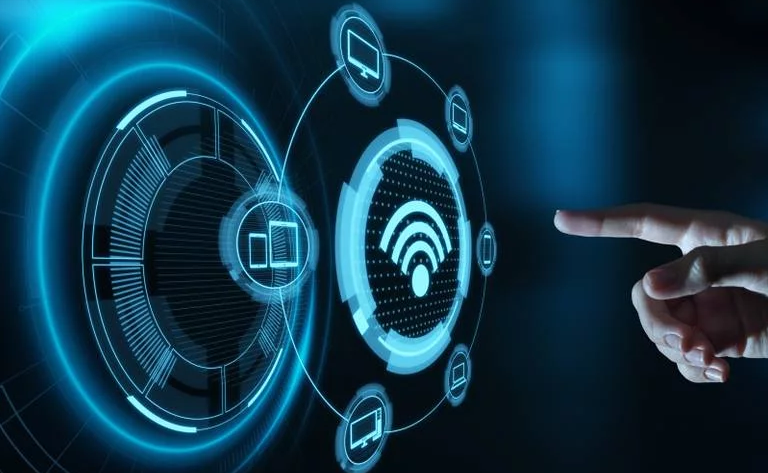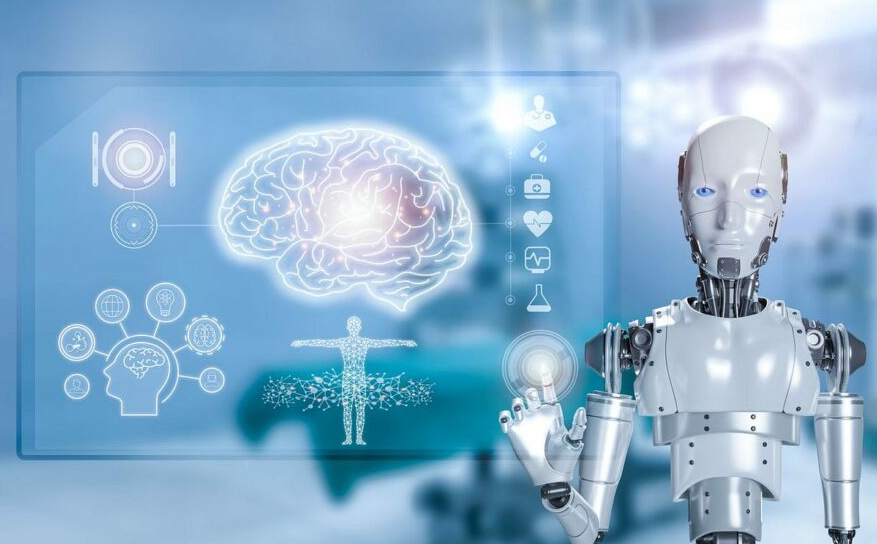Future OF Digital Transformation

Admin
AI Research Analyst | 20 February 2025Table of Content












Technology is making everything faster, and businesses are realizing what they need to grow, which is what digital transformation is all about. It’s not just about using new apps and gadgets to improve functions. It means companies are changing their operations from the ground up. In this article, we will explore what’s next in digital transformation that will make businesses even more successful and play an important role in this evolution.
Imagine more connected devices (IoT), smarter computers (AI), and lightning-fast internet (5G). What effects will these have on our lives and businesses?
Importance Of Digital Transformation In Business
Businesses need digital transformation as an essential requirement to survive among present-day market competition. A business that adopts this transformation maintains current market value together with operational flexibility.
The transformation leads organizations towards more efficient operations, which enables them to simplify their processes and minimize costs. Employees can focus on critical business-level tasks since automation software handles repetitive tasks.
How customers interact with businesses transforms. Businesses can deliver personalized customer engagements through data analysis, which helps identify buying patterns for enhancing customer retention.
Additionally, digital transformation promotes innovation. Organizations can now investigate different concepts and technological advancements through this approach because legacy systems no longer control their operations.
Organizations need to implement fast adaptations to market changes because speed defines modern business success. Organizations that adopt digital solutions gain strategic advantages compared to their competitor organizations, which decline transformation.
Digital Transformation: From Start To 2025
-
Early Days
The digital story begins when mobile phones were only used for calls. In the early 1990s and early 2000s, businesses started thinking digitally and moved from paper to computers. For example, websites became the new storefronts, and emails took the place of memos.
-
The Mobile Revolution
Then came the smartphone era. Smartphones at that time were like pocket computers, making all that could be done on a big computer screen possible at any time, anywhere. Social media websites were the ones that made this possible and helped businesses get more innovative and begin looking for their customers.
-
Cloud Changes The Game
Around 2010, businesses further transformed themselves with the help of technology. Cloud computing emerged as a major support for businesses in 2010.Fundamentally, this was where remote working started. The data used to be kept in office computers previously, but thanks to cloud computing, data also started getting saved online and it became possible to access and work on it anywhere.
This technology gave companies the ability to work from anywhere, and ever since, small and large organizations have been enjoying its benefits.
-
The AI Wave
Then came the era of AI, which changed almost everything at double speed, drastically improving work productivity. People use AI chatbots to support customers, and now every website has its own chatbot that provides instant responses to customers, which has increased customer satisfaction rates.
-
Today's Digital World (2025)
And now, digital transformation is no longer about the tech—it's about where and how we work and live. Remote is the new norm. Virtual reality meetings are happening. AI powers daily tasks, and even small-scale operations can access sophisticated digital capabilities previously reserved for large corporations.
What Will Be The Future Of Digital Transformation?
-
5G To 6G
As 5G expands, things will happen faster than expected in 2025. The technology enables us to do once unthinkable things, like allowing surgeons to perform operations remotely with robot assistance. Driverless cars can comprehend signals and obey rules.
But this is for 2025; the next case will be 6G, which will be 100 times quicker than 5G. This might enable us to have holographic communication. Suppose you are in a live call to someone, but it seems like that individual is sitting right beside you.
-
Quantum Computing Becomes Reality
Between 2025 and 2030, quantum computers will begin to solve problems that current computers are unable to handle. This translates into improved drug discovery, weather forecasting, and financial modeling. Although not in every household, quantum computing will drive scientific and medical breakthroughs.
-
Brain-Computer Interfaces
By 2030, we may be able to command devices with our minds. Early prototypes already assist individuals with disabilities, but soon they may assist anyone in controlling their smart home, typing messages, or gaming using their minds.
-
Digital Twins Go Personal
Not just replicating buildings and machines, we will also have digital versions of entire cities and individuals. These copies would enable physicians to forecast ailments ahead of time and allow cities to pilot initiatives prior to implementation in the real world.
-
AI Turns into Your Private Life Coach
AI will move from simply answering questions to actually assisting in managing your life. It may recommend improved sleep patterns, assist in career planning, or even detect early warning signs of health issues by monitoring your daily habits.
-
Metaverse Goes Mainstream
Virtual worlds will be as common as social media is now. Humans will work, shop, learn, and socialize in immersive digital environments. You could go to a concert, take a class, or hold a work meeting – all in the metaverse.
-
Green Tech Revolution
Environmental issues will push new digital innovations. Smart grids will maximize energy consumption, while AI will assist in combating climate change by discovering new means of lowering carbon emissions. Your house will automatically adapt its energy consumption according to your needs and carbon footprint.
-
Autonomous Everything
Autonomous cars will be just the beginning. We'll have autonomous delivery drones, domestic robots, and intelligent cities that take care of themselves. Your shopping could be delivered by drone as robots tidy up your home and look after your garden.
Main Challenges Organizations Face During Digital Transformation
- Legacy System Integration Organizations face difficulties when they attempt to link new digital solutions to their current legacy systems. It cause both interoperability problems and data transfer complications.
- Changing employee attitudes and updating traditional organizational mindsets to digital foundations is challenging for organizational development.
A solution for cultural resistance involves adopting change management techniques. These techniques are based on clear communications, employee training, and inclusion throughout transformation phases. Innovation in the workplace, coupled with the benefits of adopting new technologies, will reduce implementation challenges. Digital champions selected from within teams act as champions for the digital transformation process. They promote team ownership and enthusiasm.
- Organizations everywhere lack digital professionals and face difficulties in converting existing staff into technology-ready personnel. The situation is parallel to trying to place a square-shaped peg inside a circular-shaped hole. Digital solutions function as square pegs that create resistance when attempting to install them within round holes of existing legacy systems. It prevents a smooth integration.
Impact of Digital Transformation on Different Industries
Healthcare
Healthcare benefits from the digital age through numerous elements that surpass virtual medical appointments. Modern wearable technology continuously measures body data to prevent disease. Medical AI diagnostics now support clinical decision-making for doctors by helping hospital staff. Medical staff can monitor key patient information through remote systems that allow dynamic treatment modifications remotely. It transforms houses into auxiliary healthcare centers.
Retail
Through its digital-physical hybrid formation, retail has developed into a complex system. Before making a purchase, customers use augmented reality to see products in their homes, and AI systems direct inventory control to prevent stock shortages. People experience personalized retail through smart mirrors and virtual shopping assistants who detect customer needs before requirements come to life.
Manufacturing Sector
The modern factory environment evolves into the intelligent ecosystem. The use of digital twins in industry creates precise virtual representations of manufacturing sites. It anticipates maintenance requirements and optimizes systems in real time. The partnership between humans and collaborative robots allows task precision duties to be performed alongside AI management of manufacturing resources and quality control processes. The facility gains a network of IoT sensors which functions as a nervous system to offer continuous performance optimization data.
Sum Up
Digital transformation will continue to grow beyond its basic technological phase. Future business success requires a creative culture that promotes continuous adaptability and innovation. It helps companies leverage AI-powered automation within real-time computing environments.
Success in new technologies hinges on balancing technological innovation with human-centric business strategies. Companies that integrate digital capabilities with employee development, environmental responsibility, and ethical practices are poised to thrive in the digital era.
Organizations achieve digital success by developing flexible systems that transform value-based principles and human relationships during technological change.


